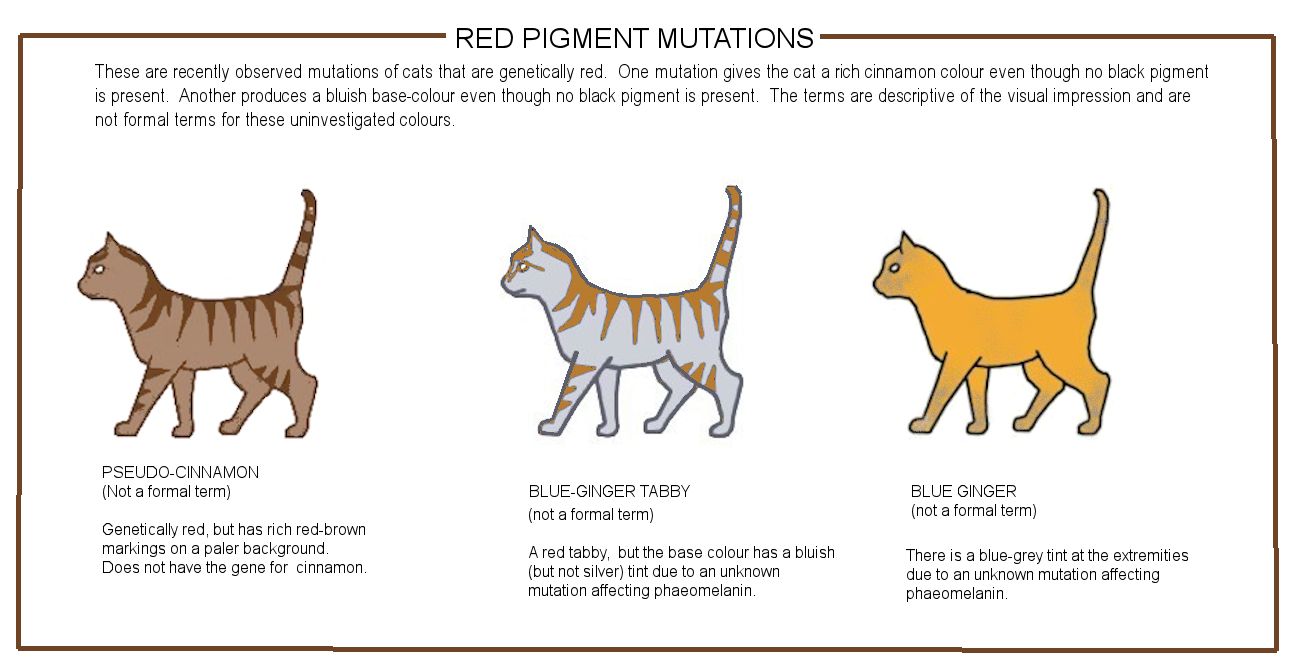
RED-ON-BLUE TABBIES & PSEUDO-CINNAMON
There are two different pigments in cats:
Eumelanin (the black based colours) and phaeomelanin (in "golden tabbies," rufism and red-based colours). Some out-dated texts refer to a third pigment called "trichochrome," but this is a component part of phaeomelanin, not a separate colour. These basic colours can be modified by numerous other genes (known as polygenes) which creates warmer or cooler tones.
For the mutation in Maine Coon cats see Pseudo-Cinnamon: Phoenix Colour
Marjan Boonen, a breeder in The Netherlands, has noticed that red cats sometimes have a bluish hue on their extremities: tail, feet, muzzles and ears. In many cases, kittens with bluish extremities turned fully red as they grew older, but some adult cats still retain the blue/grey hue. Tosca, a solid red female shows really clear bluish hues while the red-and-white bicolour housecat shows the blue tailtip really well and the lighter part of his tabby pattern also looks a bit grey. In black/brown tabby cats, polygenes are known to affect the background colour, sometimes warming (brightening) it and sometimes "cooling" it. In silver cats, there is sometimes a golden "tarnish" on the muzzle. In red or cream cats (the red/cream colour is due to phaeomelanin) the bluish effect may be due to such genes causing some eumelanin to be expressed. Because the bluish hue is retricted to the extremities (points) it may be affected by temperature, as those regions are cooler than the cat's torso.
I received these images from Lucas Freitag (Massachusetts, USA) in August 2023. Jimmy was much more orange as a baby with grey points, but has gradually gotten darker with age (his first birthday was August 15th 2023).
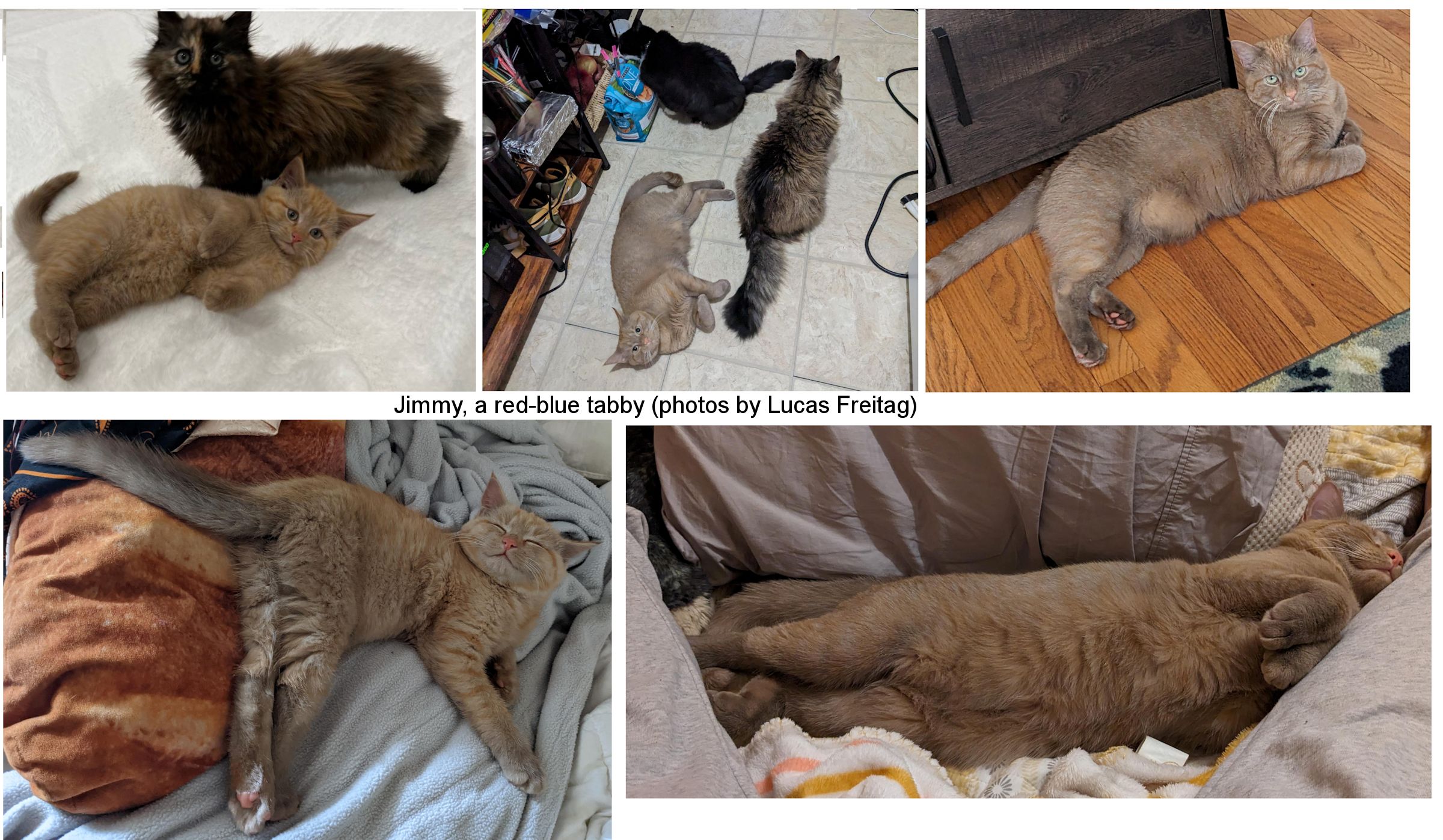
In July 2019, Hannah in the USA sent my photos of her 2-year-old cat, Gingerbits GB for short, who has a very prominent red-on-blue/blue-ginger tabby pattern. Hannah obtained Gingerbits in November 2018, and the shelter he came had tried to wash him because they thought the blue areas were due to grime. Nobody wanted to adopt him because he looked so dirty and because he tended to stare at people in an uncanny way. With no official term for this colour/pattern, and with people passing him by because of it, the information sheet at the shelter said he was a very rare silver-cream tabby. Hannah s vet has also never seen a cat with this coloration before. The markings look like blue colour points they cover the ginger fur on his extremities.
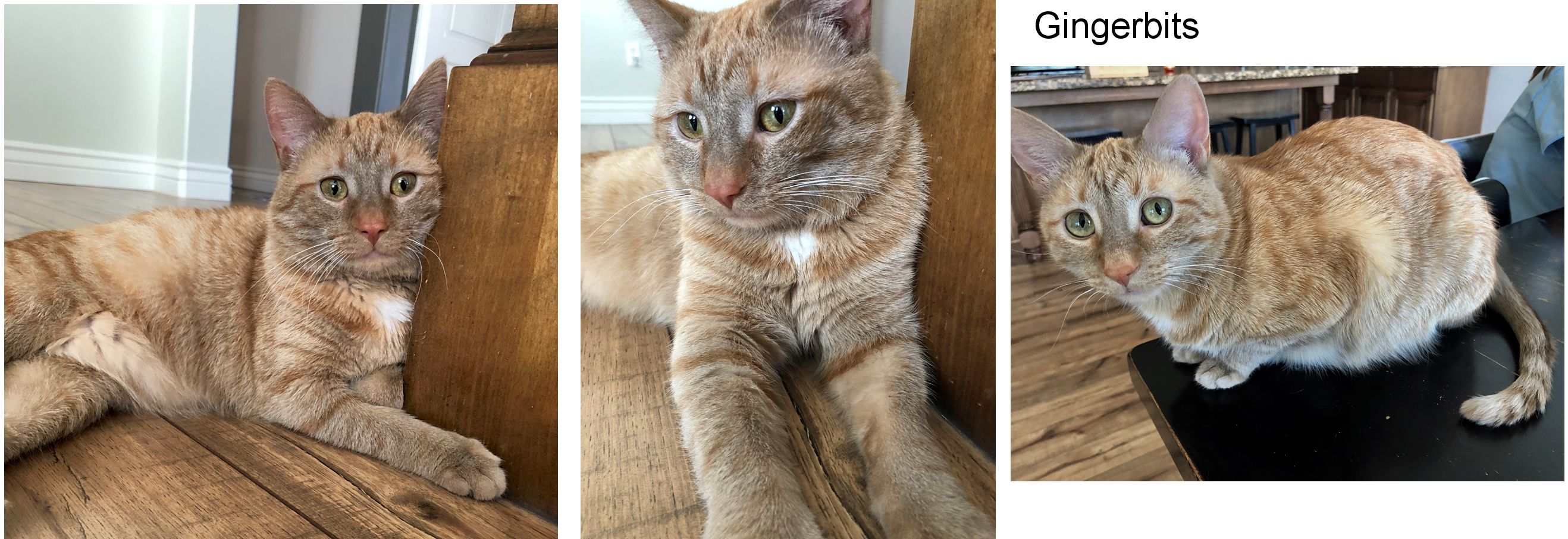

Here are some photos of an unusually coloured 11-month-old household pet called Oliver (owned by Jill Bristow) shown in ACFA in Canada in 2015. He started off as a dark orange tabby feral/stray kitten caught in a squirrel trap when he was about six weeks old in Winnipeg. He then darkened as he has got older and to a deeper orange brown colour which has a slight bluish undertone. It definitely looks much more brown than a normal red tabby and resembles the cinnamon colour (a recessive allele of Black i.e. a eumelanin colour). Howeve Oliver DNA tests as B/B and non-agouti meaning he should be self black (if no O gene is present) or self red (if the O gene is also present). As he is not black, he must be genetically red. He is not chocolate or cinnamon (alleles of black), despite the visual appearance. It's as though the red gene doesn't fully suppress the expression of eumelanin. He carries colourpoint and blue dilution. Non-agouti red usually shows ghost markings, but not on a blue background. The blue undertone is the unknown factor that might be a novel mutation tht modifies the base colour of red.

(2016) Polly McNichols sent some photos of two male tortie littermates, Edward (pictured as a kitten and an adult) and Rocky (who was adopted, so only shown as a kitten). Edward was 18 months old at the time of the adult photos. He's a pale orange tabby and has one grey tortie paw and lower leg. His mother was a feral black and orange tortie and his dad was a feral pale orange tabby (both parents are now neutered). His blue markings could be due to a skin cell mutation (like a birthmark). Since all the litter were orange or cream (4 males and 1 female), he can t have swapped cells with a darker sibling in utero. His overall coat colour is interesting. He has a dusty blue hue to his fur. The first time he went to the vet the vet tech commented that it looked like someone had sprinkled dust all over him. This resembles an effect dubbed blue ginger where not all eumelanin is converted to phaeomelanin. Unlike most blue gingers reported, Edward s doesn t have bluish face, tail and paws. He just has a mottled left front paw and some bluish spots on the back of his hind paw, plus a little at the base and tips. His littermate, Rocky, had a definite bluish grey hue to the end of his tail, hind paws and legs.
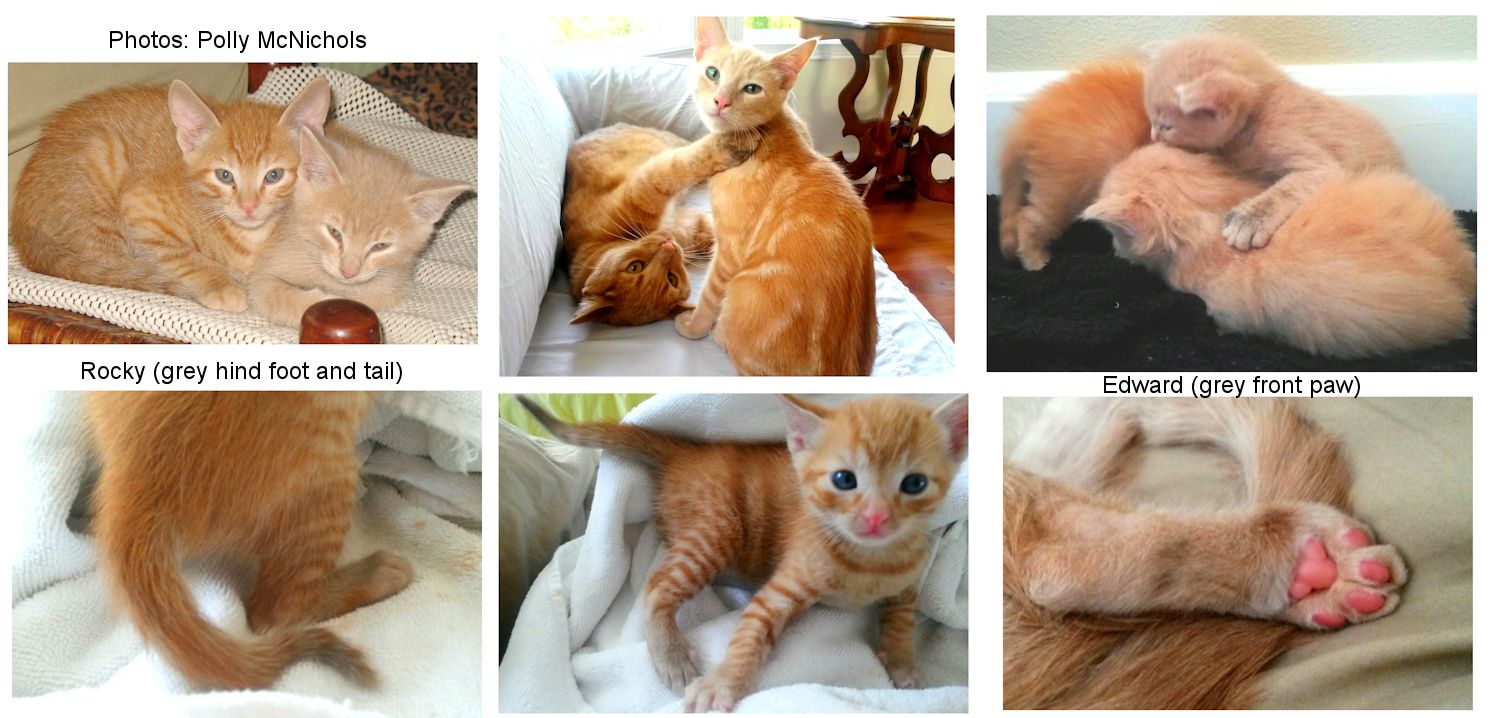
In January 2017, Anita Cheetham mentioned a British Shorthair red stud who regularly deposits a black spot on a paw pad on a lot of his kittens. She had recently had a kitten from him that had black hairs just on a back foot. In addition, some of the red girls' noses go grey and the nose leathers go quite black (the atter may be lentigo or black freckling, which is not uncommon on red cats).

In 2023 Sammie Marie provided photos of these red on blue tabby kittens, Charlie and Dibbles. They were strays in someone’s barn. The mother (a feral that has avoided being caught for spaying) was possibly an orange tabby that has had other litters with the same colouring. The current litter had 7 kittens; 5 of them looked just like this (3 long hair and 2 short hair). One was tortie and another was an interesting beige "white" colour which might be the dilute form of red-on-blue (cream-on-lilac). Apart from the tortie all kittens were male. Despite the tabby pattern showing clearly, Sammie’s cats tested as non-agouti. The visible pattern is because the non-agouti gene doesn’t properly suppress markings in the red colour . . . while another gene modifies the background colour!
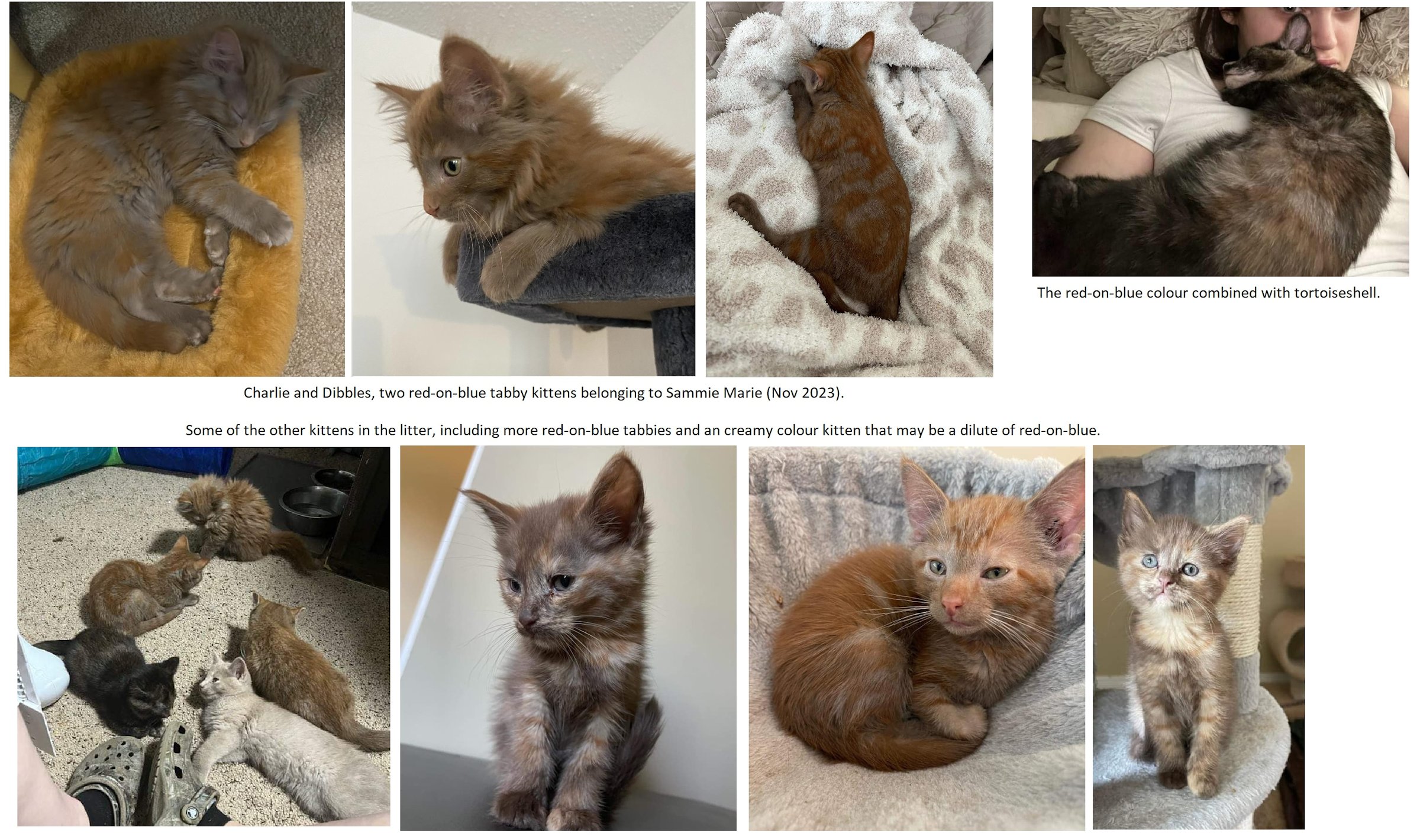
Also in 2023, veterinarian Dierenarts Maurice Kuyten provided a photo of brothers with British Shorthair genes. In the photo they are anesthetised ready for neutering. One brother is a normal-looking "ginger" tabby. The upper cat is a "blue ginger tabby." When the blue ginger cat was born it was a silvery colour with gold markings and the pigment slowly changed into blue with red (this might have been fever coat).
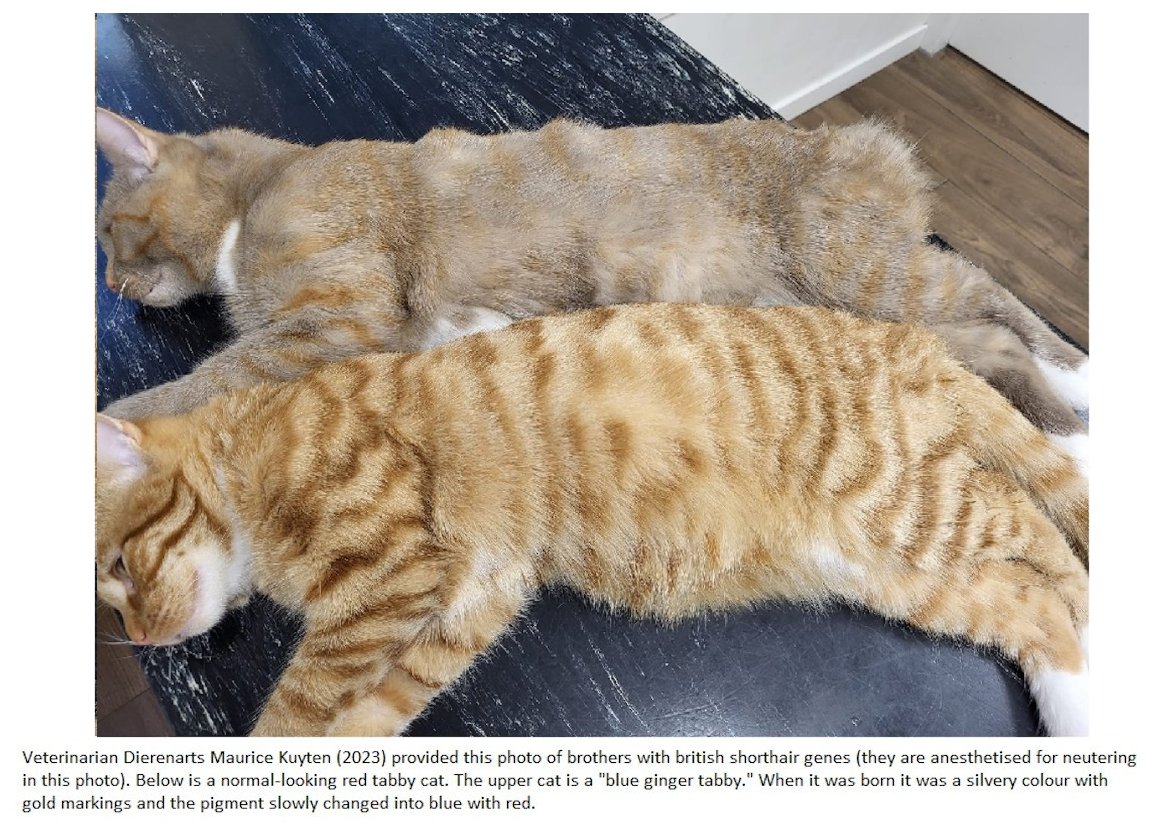
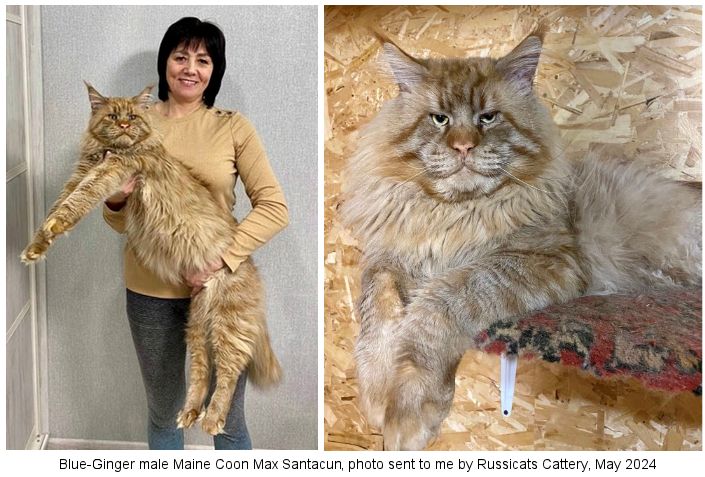
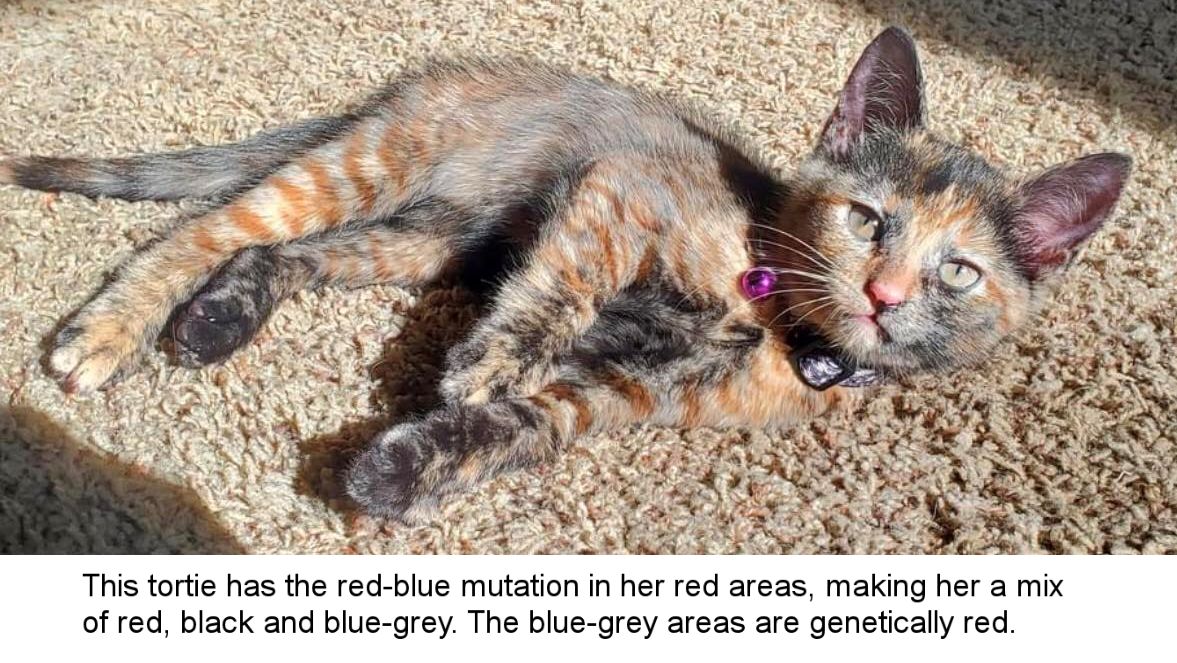
In October 2024, Jesica Turner in Amarillo, Texas, USA sent me this photo of her randombred blue-ginger tabby. His mother is a tortoiseshell cat, but the father is unknown.

The red-on-blue tabby pattern appears to be a form of the newly identified phoenix colour - a modification of genetic red.
Chart: Recently Noted Mutations of Red Pigment
These colours are under investigation and may not be true mutations, just slight modifications of how known genes are being expressed visually. For now I'll use the term "mutation" in a very loose sense. All of these occur on cats that are genetically red. The colours visuallyb resemble eumelanin (black pigment) colours even though no black pigment is present. One mutation/modification turns red pigment into a rich cinnamon colour. Another turns the ground colour of red tabbies to a bluish/lilac colour. This may also be responsible for the bluish tones at the extremities of some red cats.
